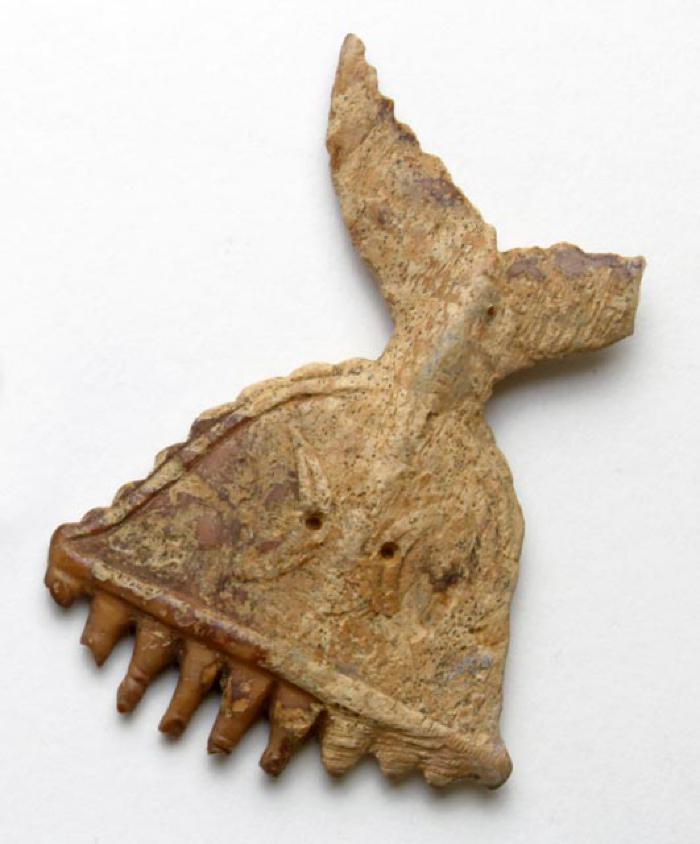Comb — Kacagsuuteq
Cuumillallret aturtaakait kacagsuutet cucunarta'iluteng. – Ancestors used to always use combs to make themselves beautiful.

Photo: Ancient Ivory comb, gift of Clyda Christiansen.
Combs have been a part of the human tool kit for at least 5,000 years. These familiar toothed devices come in a variety of sizes, shapes, and materials, and they have a number of functions. Around the world, people use combs to groom and decorate their hair, secure objects to their heads, remove pests, and work with fibers. Some combs are even used as musical instruments.
The Alutiiq language suggests that people recognized different types of combs. Kacagsuuteq is the Kodiak Alutiiq term for a hair comb. However, Prince William Sound Alutiiq speakers differentiate between the wide-tooth and fine-toothed comb, implying that these tools had different functions. We know that lice were once common, household pests. Perhaps smaller toothed combs were used in the tedious job of removing nits from people’s hair, a remedy employed around the world. It is also possible that Alutiiq people used combs to work grass. Among the neighboring Yup’ik people, women straightened course grass with special combs before braiding the grass into rope.
Archaeological data indicate that Alutiiq people have been using combs for about 2,000 years. A comb from the Uyak Site is carved from antler. It has a tall, gently curved body and widely spaced teeth. This specimen is undecorated, but others from the same era are made of ivory and decorated with geometric patterns and animal carvings. Interestingly these tools appear in the archaeological record at a time when jewelry became popular. As such, these ancient combs were items of personal adornment.
The Alutiiq language suggests that people recognized different types of combs. Kacagsuuteq is the Kodiak Alutiiq term for a hair comb. However, Prince William Sound Alutiiq speakers differentiate between the wide-tooth and fine-toothed comb, implying that these tools had different functions. We know that lice were once common, household pests. Perhaps smaller toothed combs were used in the tedious job of removing nits from people’s hair, a remedy employed around the world. It is also possible that Alutiiq people used combs to work grass. Among the neighboring Yup’ik people, women straightened course grass with special combs before braiding the grass into rope.
Archaeological data indicate that Alutiiq people have been using combs for about 2,000 years. A comb from the Uyak Site is carved from antler. It has a tall, gently curved body and widely spaced teeth. This specimen is undecorated, but others from the same era are made of ivory and decorated with geometric patterns and animal carvings. Interestingly these tools appear in the archaeological record at a time when jewelry became popular. As such, these ancient combs were items of personal adornment.
